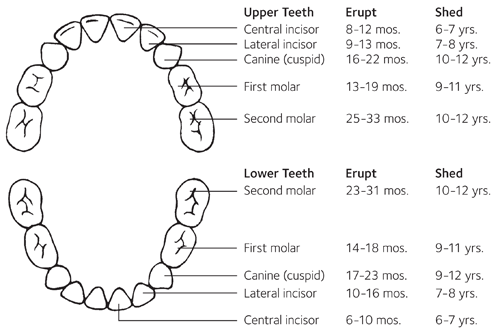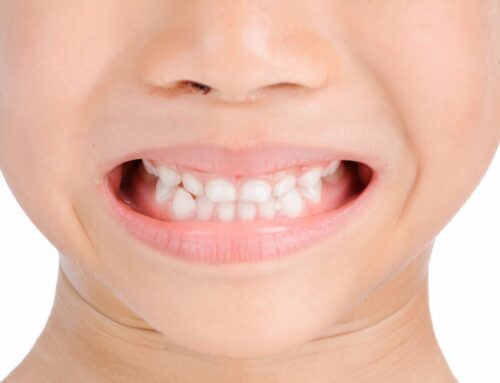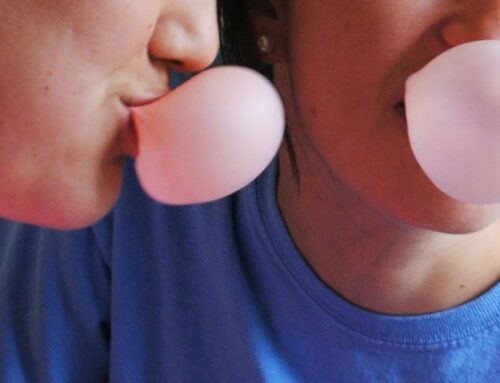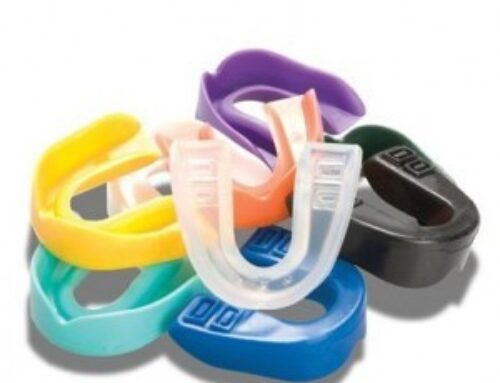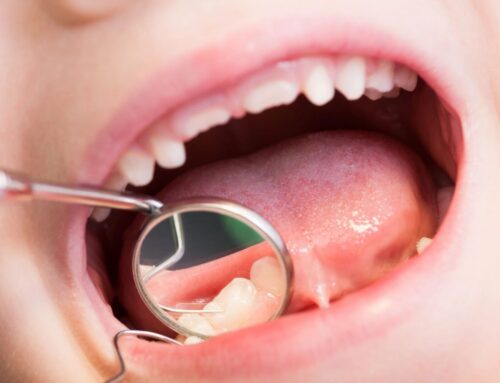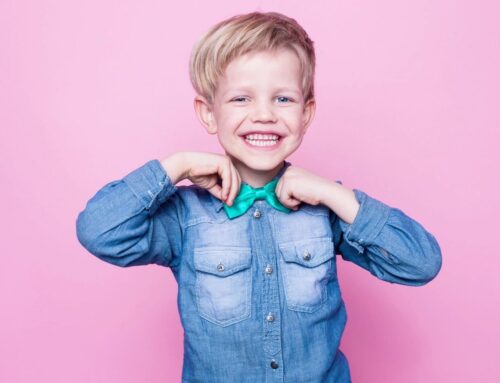By the time your child starts kindergarten, you may have almost forgotten that their cute set of teeth are just place holders for the permanent ones. After all, it was a long, sometimes tearful, teething process growing in those first teeth – who wouldn’t want to forget that? Well, be reassured that for most kids the transition from baby teeth to adult teeth is more giggles than tears. So don’t be too concerned when the day comes that you hear your child proclaim, “Hey, my tooth is wiggling!”
Baby teeth, also called primary teeth by your child’s dentist, start growing in when a child is about six-months-old. Typically, the last baby teeth to grow in are a set of molars at the back of their mouth when they are two- to three-years-old. Then kids get a break of about three years before the next wave of teeth starts.
When a permanent tooth is ready to grow in, it pushes toward the surface of the gum. If there is a primary tooth in its way, the primary tooth’s root will dissolve, making the tooth seem loose and wiggly. Eventually, the primary tooth will fall out so that the permanent tooth can grow in.
The first teeth to get wiggly and fall out will be in the very center front, most likely on the bottom. This process may seem familiar to you because the first tooth to get loose is probably the same tooth that was the first to grow in. (This is a good time to pull out those baby pictures of their first tooth!). It may take months from that first wiggle for the tooth to fall out. It is perfectly okay for your child to help it wiggle and loosen! Just encourage them to be gentle and not yank it out forcefully. There will be a little blood when it falls out, but it will quickly stop.
As a primary tooth falls out, the permanent tooth is right behind it, waiting to move into the open space. Don’t be surprised if you can see it right away! Since this portion of your child’s gum already has a hole ready for the tooth, it won’t hurt for the tooth to grow into it.
There are a few permanent teeth – twelve, to be exact – that don’t have primary teeth holding a place for them. These teeth are the first, second, and third permanent sets of molars. The first set grows in behind your child’s two sets of primary molars, around the same time that your child is losing their front teeth. Since there aren’t any primary teeth falling out and leaving an open hole for these teeth, the gum might ache and irritate your child until it “erupts”. It is okay to give them children’s ibuprofen or acetaminophen to ease the pain.
Not every child will suffer teething pain when their first permanent molars come in, which means they are going to sneak in under the radar! You should peak in your child’s mouth every once in a while and count their molars. If you see three molars in a row, then the first set of permanent molars are already in – congratulations! Make sure your child knows how important these new teeth are – they are PERMANENT – and they need to be kept super clean.
The process of swapping baby teeth for permanent ones lasts years. There will be a long period in which their mouth has a mixed set of primary and permanent teeth.
For the most part, it is a fun process full of laughter and celebration. Just be prepared for that big question every child will ask: How much will the Tooth Fairy give me?

